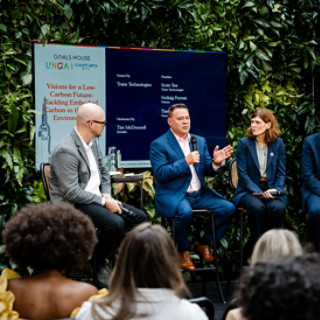News
May 29, 2025
Trane Technologies Delivers Leading Business and Sustainability Performance by Reducing Customers’ Energy Use and Carbon EmissionsDecember 16, 2025
Trane Technologies Pioneers Circularity Impact MetricsDecember 2, 2025
Trane Technologies to Acquire Stellar Energy Digital Business
November 06 – November 21, 2025
COP30
September 21 – September 28, 2025
Climate Week NYC 2025
Travis Bullard
media@tranetechnologies.com
Ivy Wang
ivy.wang@tranetechnologies.com (8610) 65264120 Ext. 262
Geraldine Velner
geraldine.velner@tranetechnologies.com
+32 493 282676
Media (zip)
Corporate images, leader photos, videos